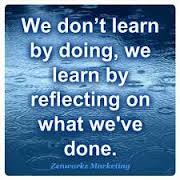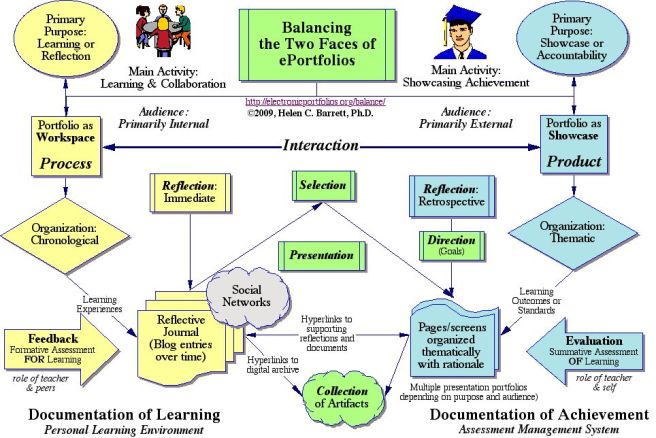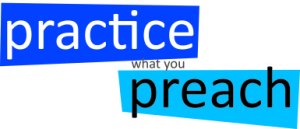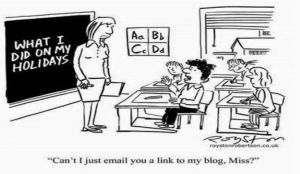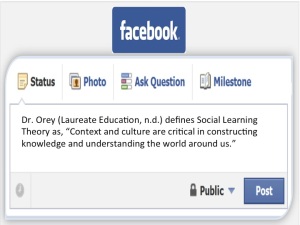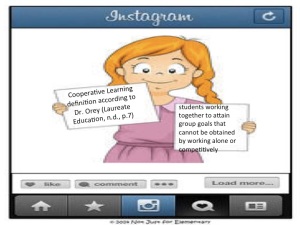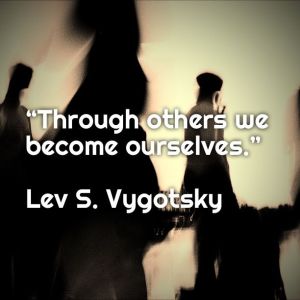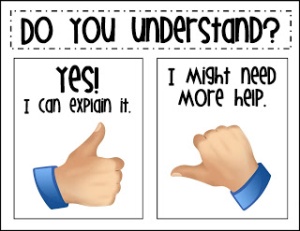For this blog post, I will reflect on the course Integrating Technology Across Content Areas at Walden University.
Summarize any new learning that resulted from your following your GAME plan and explain what impact your new learning will have on your instructional practice.
There are two indicators based on the ISTE-T standards that I needed to improve and strengthen my confidence and proficiency. The first was standard 3b: Model Digital Age and Learning. “Collaborate with students, peers, parents, and community members using digital tools and resources to support student success and innovation” (ISTE, 2008). Secondly, standard 4b: Promote and Model Digital Citizenship and Responsibility. “Address the diverse needs of all learners by using learner-centered strategies providing equitable access to appropriate digital tools and resources” (ISTE, 2008).
Because of this course, I actually studied and not glanced over the ISTE-T standards. Plus, I know that GAME plans are not only great for students, but I should be using them in my teaching practices. “The GAME plan requires you to think about and take steps to direct your learning process, specifically while learning about technology and how to integrate it into the curriculum (Cennamo, Ross, & Ertmer, 2010, p.3). It is my job to educate my students on how to set goals, take action, monitor, and evaluate and extend (2010). Creating my own GAME plan reminded me that I want my students to be self-directed lifelong learners too.
Some accomplishments of my GAME plan already include updating my blog weekly and emailing parents. I have also sent out a survey to parents gathering information about their students’ skill levels. Also, a local blogger and news anchor is coming into my classroom to talk about writing.
Describe any immediate adjustments you will make to your instructional practice regarding technology integration in your content area(s) as a result of your learning from this course.
Because of my GAME plan lessons, I no longer thinking that technology is not just a movement time killer. I want my students to move in my PE classes and I viewed technology as taking up a lot of time. My colleagues in this class have shared wonderful resources throughout the eight weeks of this course. Plus, reading and watching all the videos in the last eight weeks have me feeling confident. Now, I know that I can utilize technology without loss of movement time.
I already started to use social media in my classroom. Started using the seesaw digital student portfolio. These portfolios allow for collaboration and reflection. Vicki Davis (Laureate Education, Inc., 2009b) stated that a social media in the classroom benefit is that it allows synchronized teamwork. Anything that provides more coordination, collaboration, and teamwork in my PE classroom is a plus.
I am more confident in introducing problem-based learning lessons into my curriculum. Plus, technology can enhance a PBL lesson. Dr. Peggy Ertmer (Laureate Education, Inc., 2009a) stated that benefits of PBL include: promotes students’ development as self-directed learners, students learn how to collaborate with others, and problems are typically cross circular.
There are excellent PBL lessons that will provide movement time and is meaningful to my students.
In general, this course provided me with more confidence in my teaching practices. I have learned so much from my colleagues in this course and my professor.
References
Cennamo, K., Ross, J., & Ertmer, P. (2010). Technology integration for meaningful classroom use: A standards-based approach. Belmont, CA: Wadsworth, Cengage Learning.
International Society for Technology in Education. (2008). National education standards for teachers (NETS-T). Retrieved from http://www.iste.org/standards/iste-standards/standards-for-teachers
Laureate Education, Inc. (Executive Producer). (2009). Integrating technology across the content areas: Spotlight on technology: Problem-based learning, part 1. Baltimore, MD: Author.
Laureate Education, Inc. (Executive Producer). (2009). Integrating technology across the content areas: Spotlight on technology: Social networking and online collaboration, part 1. Baltimore, MD: Author.
